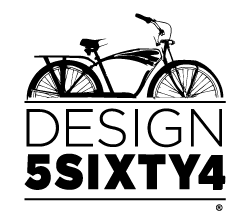Good legibility offers up good visual communication.
After stumbling up some efforts at visual communication that have been challenging legibility, which for both the business and the audience is a heavy dose of a disservice.
Good legibility allows users to grasp your message without having to think. If something is illegible or even slightly complicated, users may pause—even a taking a second interferes with the message. Sure, the message gets processed, but if your audience has to take the extra time to absorb the content, a design problem exists. And if they’re online, they are likely going to move on, because let’s face it, the web is an instant gratification space.
So, where do we go from here? Let’s run through a few tips to help you whether you’re a designer, or a business looking for some tips in your DIY marketing efforts.
Tips for legibility
Clear letterforms.
Silhouettes of each letter needs to be distinct and clear.
No complications.
Find a typeface that is almost geometric and devoid of excess frills. If this is unfamiliar territory for you, start with this beautiful list published by
Good kerning.
Just as your lines need adequate space, so do your letters. Create equal amounts of space between letters; not too loose, nor too tight.
Good leading.
Be generous with your leading (or line height). Give your lines of text some room to breath, allowing for ease of reading for your viewer.
Open space.
The shape and size of the counter and bowl (curved stroke enclosing the counter) or enclosed space in a letterform can affect readability. Looks for typefaces that breath and feel open.
Consider your environment.
Where are you communicating with your audience? Let’s focus on social media and mobile devices for example since this is what sparked this article.
Let’s say you’re creating a post or promotion for an upcoming event on Instagram with a message over an image, be sure to consider the screen size that people are viewing your posts. A couple of quick tips:
• Limit your text on that image—save it for a caption.
• Use good fonts (shared above) that are easy to read when overlaying an image, especially.
• Set up the art and dimensions for the appropriate platform you’re posting on. This
In this first sample below, we are going all in—notice how the legibility takes a hit when we throw in the entire “kitchen sink”.

In this second image below, we cleaned it up, leaving the bottom details (placeholder text) for the caption to support the image.

#hashtag #hashtag #bestpractices
Clear, concise and legibility within your messaging, along with solid visuals will go a long way! Easy day, right?
You don’t have to go it alone.
We understand that sometimes you want to get all the information out in one shot on one image. Efficient, right? But consider this—if legibility is tough for you, it’s certainly difficult for your audience. We also understand that often—because of budget or whatever the case may be you’re trying to wear all the hats. We want to take this opportunity to share a friendly reminder that there are many creatives and marketing brilliance in your area that consult and support visual communications for businesses like yours.
If you need some ideas and support, we’ve got your back. Let’s Ride.
